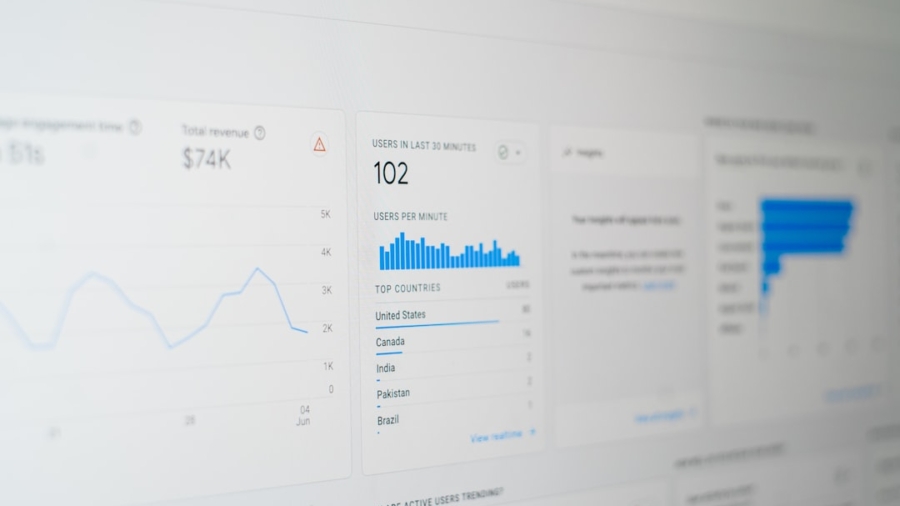In recent years, the rapid advancement of artificial intelligence (AI) has transformed various sectors, from healthcare to finance, by enhancing efficiency and decision-making processes. However, as AI systems become increasingly complex, the need for transparency and interpretability has emerged as a critical concern. Explainable AI (XAI) refers to methods and techniques that make the outputs of AI systems understandable to humans.
This is particularly important in high-stakes environments where decisions can significantly impact individuals and organizations. The ability to explain how an AI system arrived at a particular decision fosters trust, accountability, and compliance with regulatory standards. The significance of explainability in AI cannot be overstated, especially as regulatory bodies around the world begin to impose stricter guidelines on the use of AI technologies.
For instance, the European Union’s proposed Artificial Intelligence Act emphasizes the need for transparency in AI systems, particularly those classified as high-risk. As organizations increasingly rely on AI for critical decision-making, the demand for explainable models that can elucidate their reasoning processes becomes paramount. This article delves into the intersection of explainable AI and regulatory compliance, exploring its impact, challenges, best practices, and future prospects.
Key Takeaways
- Explainable AI (XAI) refers to the ability of AI systems to provide understandable explanations for their decisions and actions, which is crucial for building trust and ensuring transparency in regulatory compliance.
- AI has a significant impact on regulatory compliance by automating processes, improving accuracy, and reducing human error, but it also raises concerns about accountability and transparency.
- XAI plays a critical role in regulatory compliance by enabling organizations to understand and interpret AI-driven decisions, ensuring they align with regulatory requirements and ethical standards.
- Non-explainable AI poses challenges and risks in regulatory compliance, such as lack of transparency, potential bias, and difficulties in auditing and accountability.
- Best practices for implementing XAI in regulatory compliance include using interpretable models, providing clear explanations for AI decisions, and involving domain experts in the development and deployment of AI systems.
- Case studies of XAI in regulatory compliance demonstrate how organizations have successfully used explainable AI to ensure compliance with regulations, improve decision-making processes, and enhance trust with stakeholders.
- The future of XAI in regulatory compliance will likely involve advancements in interpretability techniques, increased regulatory requirements for transparency, and the integration of XAI into various industries and sectors.
- In conclusion, prioritizing explainable AI is essential for regulatory compliance as it helps organizations build trust, ensure accountability, and mitigate risks associated with non-explainable AI systems.
The Impact of AI on Regulatory Compliance
The integration of AI into business operations has revolutionized how organizations approach regulatory compliance. By automating processes such as data analysis, risk assessment, and reporting, AI can significantly enhance compliance efficiency. For example, financial institutions utilize machine learning algorithms to monitor transactions in real-time, identifying suspicious activities that may indicate money laundering or fraud.
This proactive approach not only streamlines compliance efforts but also reduces the likelihood of regulatory penalties. However, the deployment of AI in compliance also raises several challenges. The opacity of many AI models can lead to difficulties in understanding how decisions are made, which is particularly problematic in regulated industries.
Regulatory bodies require organizations to demonstrate that their compliance measures are effective and justifiable. When AI systems operate as “black boxes,” it becomes challenging to provide the necessary documentation and explanations required by regulators. This lack of transparency can result in increased scrutiny from regulatory agencies and potential legal ramifications for organizations that fail to meet compliance standards.
The Role of Explainable AI in Regulatory Compliance

Explainable AI plays a pivotal role in addressing the challenges posed by traditional AI systems in regulatory compliance contexts. By providing insights into the decision-making processes of AI models, XAI enables organizations to demonstrate compliance with regulatory requirements more effectively. For instance, when an AI system flags a transaction as suspicious, explainable models can articulate the specific features or patterns that led to this conclusion.
This level of transparency not only aids in satisfying regulatory demands but also enhances internal governance by allowing organizations to scrutinize their AI systems critically. Moreover, explainable AI fosters trust among stakeholders, including customers, employees, and regulators. In industries such as healthcare, where patient outcomes are at stake, the ability to explain AI-driven decisions can significantly impact patient trust and engagement.
For example, if an AI system recommends a particular treatment plan based on patient data, healthcare providers can use XAI to clarify how the recommendation was derived. This transparency reassures patients that their care is based on sound reasoning rather than arbitrary algorithms.
Challenges and Risks of Non-Explainable AI in Regulatory Compliance
The reliance on non-explainable AI systems poses significant risks for organizations striving to maintain regulatory compliance. One of the primary challenges is the potential for biased decision-making. If an AI model is trained on biased data without mechanisms for explanation or correction, it may produce outcomes that disproportionately affect certain groups.
For instance, in hiring processes, an opaque algorithm might inadvertently favor candidates from specific demographics while disadvantaging others. Such biases can lead to legal challenges and reputational damage for organizations. Additionally, non-explainable AI can hinder organizations’ ability to respond effectively to regulatory inquiries or audits.
When regulators request explanations for specific decisions made by an AI system, organizations relying on black-box models may struggle to provide satisfactory answers. This lack of clarity can result in increased scrutiny from regulators and potential fines or sanctions for non-compliance. Furthermore, organizations may face challenges in maintaining accountability within their teams if they cannot understand or explain the rationale behind automated decisions.
Best Practices for Implementing Explainable AI in Regulatory Compliance
To effectively implement explainable AI in regulatory compliance contexts, organizations should adopt several best practices that prioritize transparency and accountability. First and foremost, it is essential to select appropriate XAI techniques that align with the specific needs of the organization and its regulatory environment. Techniques such as LIME (Local Interpretable Model-agnostic Explanations) or SHAP (SHapley Additive exPlanations) can provide insights into model predictions while maintaining a balance between accuracy and interpretability.
Another critical practice involves fostering a culture of collaboration between data scientists, compliance officers, and legal teams. By working together from the outset of an AI project, these stakeholders can ensure that compliance considerations are integrated into the development process. This collaborative approach not only enhances the explainability of AI models but also helps identify potential regulatory pitfalls early on.
Furthermore, organizations should invest in continuous monitoring and evaluation of their AI systems post-deployment. Regular audits can help identify any biases or discrepancies in decision-making processes while ensuring that the models remain compliant with evolving regulations. By establishing feedback loops that incorporate insights from both internal stakeholders and external regulators, organizations can adapt their AI systems to meet changing compliance requirements effectively.
Case Studies of Explainable AI in Regulatory Compliance

Several organizations have successfully implemented explainable AI solutions to enhance their regulatory compliance efforts. One notable example is a major financial institution that adopted XAI techniques to improve its anti-money laundering (AML) processes. By utilizing SHAP values to explain model predictions related to suspicious transactions, the institution was able to provide regulators with clear justifications for its decisions.
In the healthcare sector, a prominent hospital system employed explainable AI to support clinical decision-making while adhering to strict regulatory standards.
By providing clear explanations for these recommendations, the hospital enhanced patient engagement and trust while ensuring compliance with healthcare regulations regarding informed consent and patient autonomy.
The Future of Explainable AI in Regulatory Compliance
As regulatory landscapes continue to evolve alongside advancements in technology, the future of explainable AI in regulatory compliance appears promising yet complex. With increasing scrutiny from regulators regarding algorithmic accountability and fairness, organizations will need to prioritize transparency in their AI initiatives more than ever before. The development of standardized frameworks for explainability could emerge as a critical factor in guiding organizations toward compliant practices.
Moreover, advancements in natural language processing (NLP) may facilitate more intuitive explanations for non-technical stakeholders. As XAI tools become more user-friendly and accessible, organizations will be better equipped to communicate complex model behaviors to regulators and other stakeholders effectively. This shift could lead to a more collaborative relationship between organizations and regulatory bodies as both parties work together to ensure ethical and compliant use of AI technologies.
Additionally, as public awareness of AI’s implications grows, consumer demand for transparency will likely influence organizational practices. Companies that prioritize explainability may gain a competitive edge by building trust with customers who are increasingly concerned about how their data is used and how decisions are made on their behalf.
The Importance of Prioritizing Explainable AI for Regulatory Compliance
In an era where artificial intelligence is becoming integral to business operations across various sectors, prioritizing explainable AI is essential for ensuring regulatory compliance and fostering trust among stakeholders. The complexities associated with non-explainable models pose significant risks that can jeopardize organizational integrity and lead to legal repercussions. By embracing best practices for implementing XAI solutions, organizations can navigate the intricate landscape of regulatory requirements while enhancing their decision-making processes.
As we look toward the future, it is clear that explainable AI will play a crucial role in shaping how organizations approach compliance challenges in an increasingly automated world. By investing in transparency and accountability now, businesses can position themselves as leaders in ethical AI deployment while safeguarding against potential pitfalls associated with opaque algorithms. The journey toward effective regulatory compliance through explainable AI is not merely a technical challenge; it is a commitment to responsible innovation that prioritizes human understanding and ethical considerations at every step.
In the context of understanding the importance of Explainable AI for regulatory compliance, it is essential to consider how technology can enhance user experience and accessibility. For instance, the article on staying stylish with Wear OS by Google discusses how wearable technology can integrate AI to provide personalized insights while ensuring that users are informed about how their data is being utilized. This intersection of AI and user-centric design highlights the necessity for transparency and explainability in AI systems, especially in regulated industries.
FAQs
What is Explainable AI (XAI)?
Explainable AI (XAI) refers to the ability of artificial intelligence systems to provide explanations for their decisions and actions in a way that is understandable to humans. This transparency is important for building trust and understanding in AI systems.
Why does Explainable AI matter for regulatory compliance?
Explainable AI is crucial for regulatory compliance because it allows organizations to understand and explain the decisions made by AI systems, especially in highly regulated industries such as finance, healthcare, and transportation. Regulatory bodies often require transparency and accountability in decision-making processes, which can be achieved through explainable AI.
How does Explainable AI help with regulatory compliance?
Explainable AI helps with regulatory compliance by providing clear and understandable explanations for the decisions made by AI systems. This transparency allows organizations to demonstrate compliance with regulations and standards, as well as to identify and address any potential biases or errors in the AI system.
What are the benefits of using Explainable AI for regulatory compliance?
The benefits of using Explainable AI for regulatory compliance include improved transparency, accountability, and trust in AI systems. It also helps organizations to identify and mitigate potential risks and biases, as well as to ensure compliance with regulations and standards.
Are there any regulations that specifically require Explainable AI?
While there are no specific regulations that explicitly require the use of Explainable AI, many regulatory bodies and industry standards emphasize the importance of transparency and accountability in AI systems. For example, the General Data Protection Regulation (GDPR) in the European Union includes provisions for explainable AI and the right to an explanation for automated decisions.

